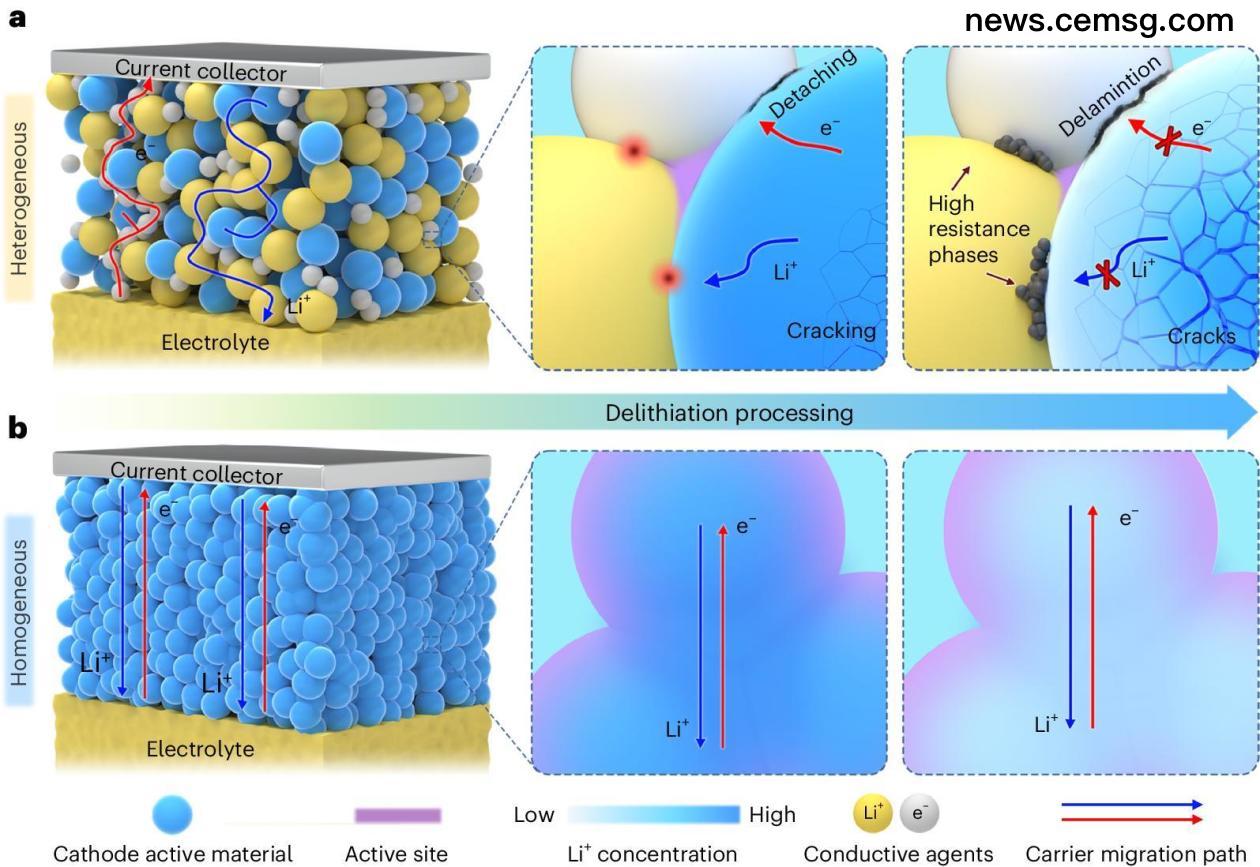Chinese scientists make new breakthrough in all-solid-state lithium battery research

Recently, a research team from the Qingdao Institute of Bioenergy and Process Technology of the Chinese Academy of Sciences has made a new breakthrough in the field of all-solid-state lithium batteries, which is expected to make the dream of miniaturization and long battery life of electronic devices a reality. This achievement was published in the international academic journal Nature-Energy on July 31.
Most lithium-ion batteries used in mobile phones, computers and other electronic devices store and release energy through liquid electrolytes. Now, scientists are studying a new type of battery - all-solid-state lithium batteries. These batteries use solid electrolytes instead of liquids, which makes them safer and not as prone to leakage or fire as liquid electrolytes.
Although all-solid-state lithium batteries sound ideal, they also face some problems in research and development. The main problem is that the different materials inside the positive electrode of the battery are difficult to perfectly match in chemical and physical properties, resulting in a variety of interface problems that affect the energy density and service life of the battery. To solve this problem, the research team developed a new material - homogenized positive electrode material (lithium titanium germanium phosphorus sulfur selenium).
Compared with traditional materials, this material has advantages such as high conductivity, high energy density, and long service life:
- High conductivity: This new material has both high ionic conductivity and high electronic conductivity, which is more than 1,000 times higher than traditional battery materials (layered oxide positive electrode materials). This means that even without relying on conductive additives, the positive electrode can smoothly complete the charging and discharging process, significantly improving the overall performance of the battery.
- High discharge specific capacity: The new material has a high discharge specific capacity of 250 mAh per gram, which exceeds the currently used high nickel positive electrode materials. At the same weight or volume, the battery of the new material can store more electrical energy. Not only can it allow the battery to continue to run longer without frequent charging, improving endurance; but it also reduces the volume of the battery, which helps to design more compact devices.
- Low volume change: During the charging and discharging process, the volume change of the new material is only 1.2%, which is much lower than the 50% of traditional materials (layered oxide positive electrode materials). This tiny volume change helps maintain the stability of the battery structure, thereby extending the battery life.
- High energy density: The energy density of the all-solid-state lithium battery using this new material reaches 390 watt-hours per kilogram, which is 1.3 times that of the long-cycle all-solid-state lithium battery reported so far.
- Long service life: The all-solid-state lithium battery using this material can achieve an ultra-long cycle of more than 10,000 cycles. After 5,000 cycles of charging, the battery can still maintain 80% of its initial capacity. It can provide more sufficient power for a longer time.
This research provides technical support for the development of energy storage equipment with high energy density and long service life, and provides safe and durable power sources for new energy vehicles, energy storage grids, deep-sea and deep-space equipment, etc. It is of great significance to the development of new energy storage systems.